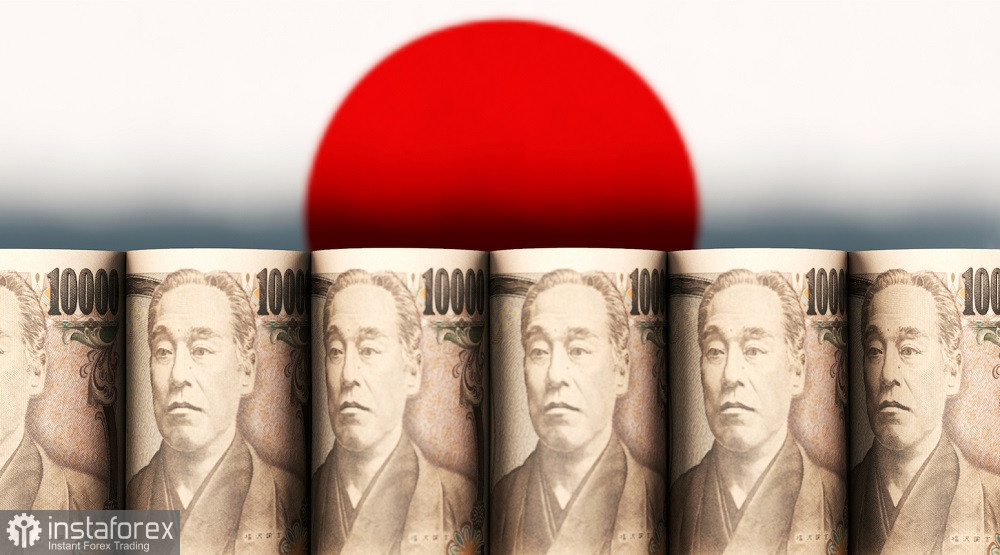On Monday, the yen reached a multi-month record against the dollar, with USD/JPY dropping to 139.59 – the lowest level since July 2023. However, sellers could not sustain the price below the 140.00 target. Despite the general weakness of the greenback, the instrument began showing an uptrend. Today's events also did not assist the USD/JPY bears, as the pair continues to gather pace despite Japan's inflation acceleration and hawkish hints from the Japanese regulator.

Overall, the yen has become a victim of inflated expectations that ultimately did not come true. Ahead of the policy meeting in September, an information bubble popped up in the market. So, traders anticipated that the Bank of Japan would deliver hawkish messages and might even shed light on a rate hike at the next meeting in October. However, in reality, the Japanese regulator expressed a cautious stance, while not refuting the declared path toward normalizing monetary policy. "Not now, and perhaps not tomorrow" - it was the message of the September meeting, which did not please sellers of USD/JPY.
To recap, several policymakers of the Bank of Japan indicated in the weeks ahead of the meeting that the central bank would raise interest rates again in the near future. Specifically, such signals were given by Naoki Tamura, Hajime Takata, and Junko Nakagawa. Besides, other fundamental factors contributed to the hawkish sentiment of the central bank. For example, wages showed positive dynamics (up 1.1% year-on-year in June, and 0.4% year-on-year in July), as did inflation in Tokyo (the increase in this indicator serves as an early warning of rising inflation nationwide).
Just hours before the announcement of the policy decision of the September meeting of the Bank of England, key data on consumer inflation in Japan was released. On the one hand, all components of the report met expectations; on the other hand, they reflected rising inflation. The overall consumer price index remained at 2.8% for three months (from May to July), but accelerated to 3.0% in August. This is the strongest CPI since October 2023. The core index, excluding fresh food prices, also rose to 2.8%. Here, we can speak of a steady uptrend: the annual CPI has been growing for the past four months and reached its highest level since February this year in August. The core CPI excluding fresh food and energy climbed by 2.0% (compared to 1.9% growth in July).
However, commenting on the latest macroeconomic reports, Bank of Japan Governor Kazuo Ueda stated that the risks of inflation exceeding the target level "have somewhat decreased," partly due to recent currency movements (since the previous meeting, the yen has strengthened against the dollar by nearly a thousand pips). At the same time, Kazuo Ueda noted that the red-hot CPI "turned out to be slightly stronger than we had estimated at previous meetings."
Regarding the maintenance of a wait-and-see approach at the September meeting, the central bank governor referred to stable economic recovery. According to him, the domestic economy is moving toward sustainable growth despite ongoing inflation.
Indeed, Japan's economy expanded by 2.9% in the second quarter. This marks the first quarter of growth after six months of negative trends. The real GDP grew by 0.7% quarter-on-quarter. Such trends allowed the Bank of Japan to refrain from rushing into the next round of tightening monetary policy.
As for the further agenda, Kazuo Ueda predictably provided vague statements, saying that the central bank would continue raising interest rates "if the economy develops according to our forecasts." Importantly, the real interest rate remains very low in Japan (around -2.5%), allowing the central bank to raise it while maintaining favorable financial conditions. In response to a clarifying question from a journalist at the press conference, Kazuo Ueda mentioned that the regulator "has some time" to make decisions on monetary policy.
What does all this indicate? The Bank of Japan will take another step toward normalizing monetary policy this year: in October or December. In my view, this will likely occur at the December meeting, partly because a government reshuffle is expected in September-October following the election of the new leader of the ruling Liberal Democratic Party. The winner will become the 102nd Prime Minister and form a new cabinet.
Thus, the differential of the Federal Reserve's and the Bank of Japan's key interest rates remains on the agenda. The Fed will be pondering how much to reduce the funds rate: by 25 or 50 basis points in the coming weeks, while the Bank of Japan will be preparing for its third rate hike of the year.
Can we speak of a sustainable uptrend under such fundamental conditions? In my opinion, we are currently witnessing a significant correction after a prolonged decline of 2,000 pips. From July to September, the USD/JPY pair tumbled from 161.82 to 139.59, so the ongoing pullback seems quite logical. However, the bullish move should not be trusted: this is a large-scale, yet still a correction. The focus is on the resistance level at 144.50 (the Kijun-sen line on the D1 timeframe and the upper line of Bollinger Bands on the H4). If the bullish momentum fades in this area, it would be prudent to consider short positions targeting 143.00 (the upper border of the Kumo cloud, coinciding with the Tenkan-sen line on the four-hour chart).
 English
English 
 Русский
Русский Bahasa Indonesia
Bahasa Indonesia Bahasa Malay
Bahasa Malay ไทย
ไทย Español
Español Deutsch
Deutsch Български
Български Français
Français Tiếng Việt
Tiếng Việt 中文
中文 বাংলা
বাংলা हिन्दी
हिन्दी Čeština
Čeština Українська
Українська Română
Română

